7 steps to create a kickass Confluence with Refined
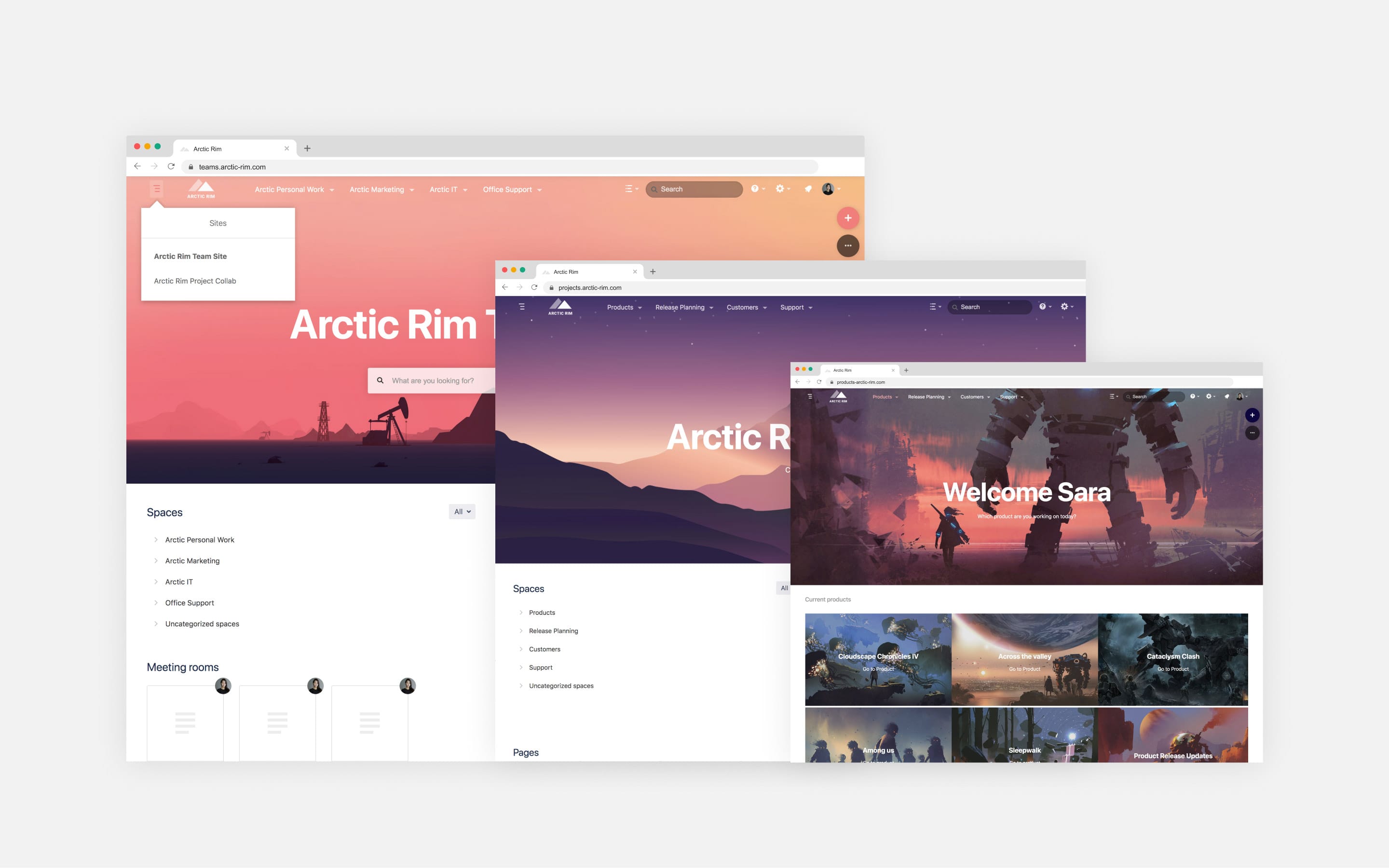
Learn how to structure, organize and theme your new Confluence instance with Refined.
Confluence does it all. It’s a hub for news, projects, information and documentation within and across teams. You can get more stuff done faster, without leaving anyone behind. And the list of benefits goes on. But all of these good things only happen if users, well, actually use it.
The trick to boosting adoption? Make your Confluence kickass.
Kickass confluence instances are easy to use, easy to navigate, easy to maintain, useful across a variety of teams, personalized for the user, and, critically, nice to look at.
To show you how to build a kickass Confluence instance of your own, we transform gaming company Arctic Rim’s instance in seven steps using Refined.
(Full disclosure: Arctic Rim is a fake company we invented for this post (good name, right?) and its sister webinar.)
- Start with Confluence basics: spaces and pages
- Add structure with a hierarchy
- Organize your pages into spaces
- Build-out your site navigation
- Add a theme
- Choose layouts for your landing pages
- Personalize Confluence for users with permissions, custom welcome messages and more
Step 1: Get organized using Confluence spaces and pages
Start by creating spaces, which are homes for different types of content. You might have a space for users on a given team or a space for users working on a given project. You can have as many spaces as you want, and ideally every page in Confluence ladders up to a space so there are no orphan pages.
Common Confluence Spaces
- Team spaces (i.e. “Marketing” or “Human Resources”)
- Project spaces (i.e., “Arctic 7.0 Launch”)
- Personal spaces (i.e., “Matt Campo” or “Angela's Sandbox”)
Atlassian recommends creating ‘parent’ pages within each space to keep them from becoming disorganized content swamps full of loosely related pages. Parent pages keep spaces organized by telling users where to drop new pages—not to mention they help everyone find what they need easily, especially as the number of pages in your instance grows.
Recap:
- Create spaces. Team, project and personal spaces are common starting points.
- Designate ‘parent pages’ to organize the pages.
Step 2: Add structure and consistency
You have spaces, parent pages and child pages worked out. Now what?
Decide what’s most important and make it stand out. You can do that two ways: on the page and around the page.
- On the page: Use Refined to assign a hierarchy to your content by displaying the most important or most-accessed content in the most visible places on the page—usually that means placing it at the top. Less important or lower-traffic content can live further down the page and below the fold.
- Around the page: Space layouts surround all the pages in a given space. You can customize the space layout so it’s always easy for users to access what they need most while navigating that space. Arctic Rim used Refined Sites for Confluence to customize the side navigation bar by adding a search bar at the top, plus news or any macro they wished to show below.
Tip: Save the custom space layout as a template to replicate it on other space homes. For max consistency, create templates for team, personal and project spaces.
What is a space layout in Confluence?
Space layouts surround all the pages in a given space. By setting up different space layouts you can customize what users see on the space and adapt them for different use cases.
You can change the space layout on a global level and on individual spaces, and you can also make templates to reuse on several spaces.
Recap:
- Assign content hierarchy and apply a space layout.
- Customize the space layout.
- Save a customized space layout as ‘custom template’ and use it in other spaces for a consistent look and feel.
Step 3: Organize Confluence spaces into categories
Refined allows you to organize spaces into categories, which sit in a top navigation menu on your site’s homepage. These categories can live in one Refined site or multiple (just as you can have pages and spaces appear in one site or many.) The best way to explain this step is to return to our Arctic Rim example to understand how they set up their structure.
Site > Category > Space > Page
Arctic Rim began with a bunch of spaces, which were spread throughout their Confluence. Some of these spaces fit together under a category. For instance, a dev-ops space, a development space and a systems space all fit neatly under the IT category. Content marketing, channel marketing, and product marketing spaces all fit neatly under the marketing category.
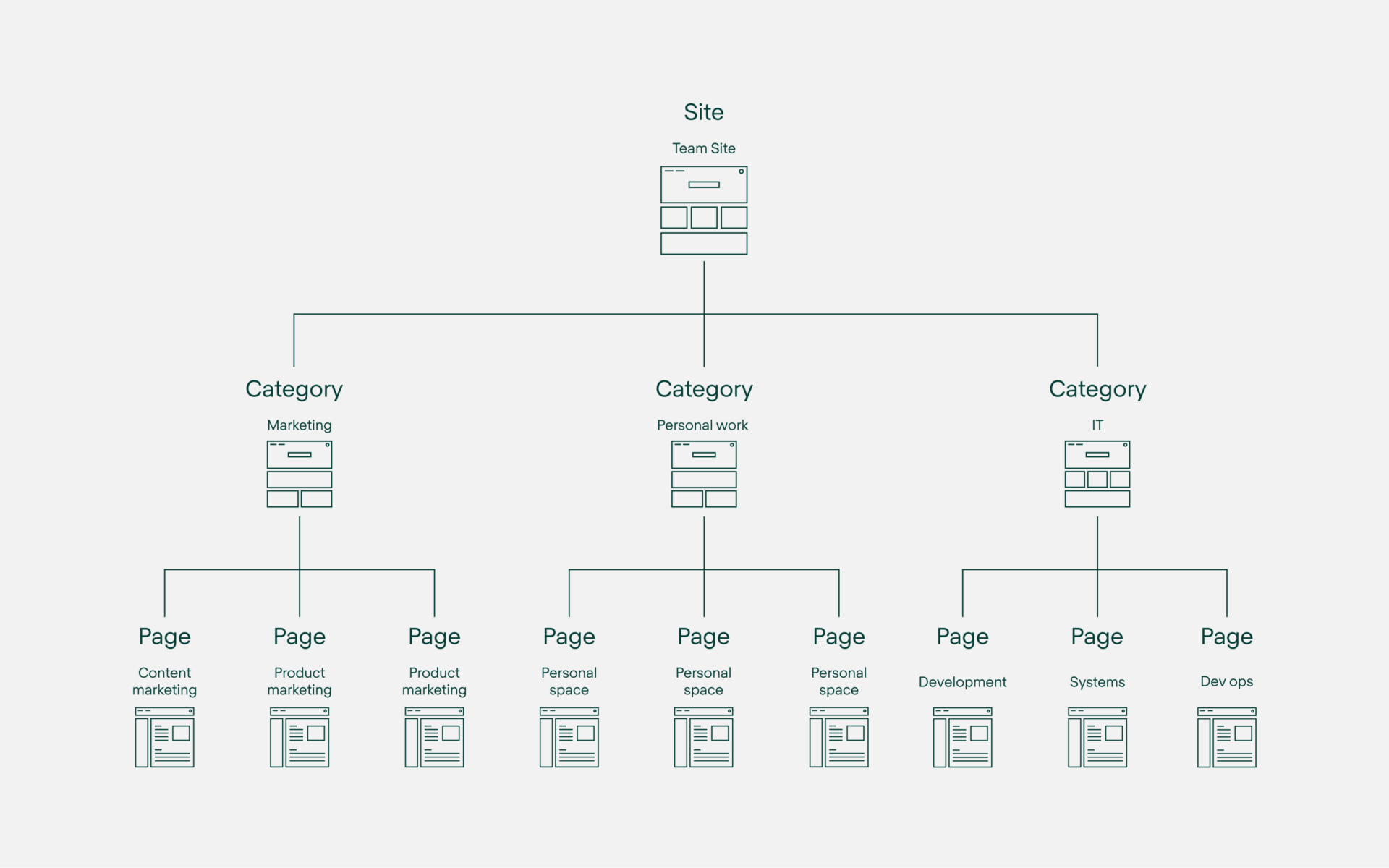
Arctic Rim also wanted a way to separate project content from personal content, so they decided to have two sites. Below you can see the structure for their second site, the project collaboration site.

In the end, Arctic Rim chose this structure for their Confluence:
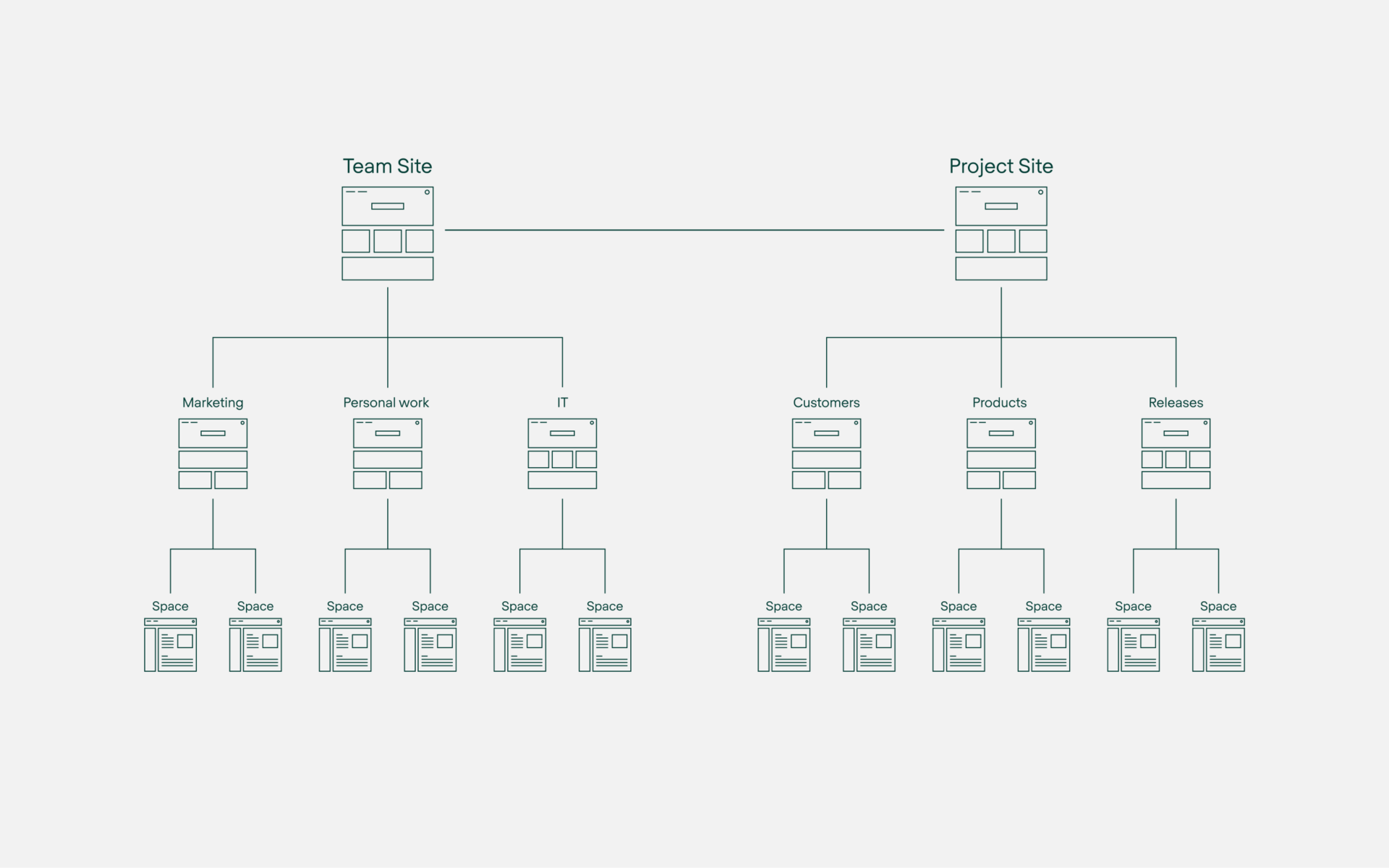
Recap
- Take stock of your spaces. If you have spaces that relate to one another, create a category and group them.
- Plan your site structure with spaces organized into categories and categories into sites.
- Remember that you can use spaces on more than one site, if you choose.
- Learn how sites can function like instances, organizing users, teams and more.
Step 4: Build your site’s navigation
Now that you’ve decided on a structure for your instance, bring it to life. Use Refined’s Site Structure to drag and drop pages into categories and categories into sites. By activating manual category permissions, admins can define who can access each site or category.
Below is a preview of how Arctic Rim built their site navigation for their team site in the Refined Site Structure.
Recap
- Build the site, category, and space navigation using Refined’s Site Structure.
- Set permissions so users only navigate where they're meant to go.
Step 5: Add a theme
This is the fun part. With Refined out-of-the-box your site will look something like the following:
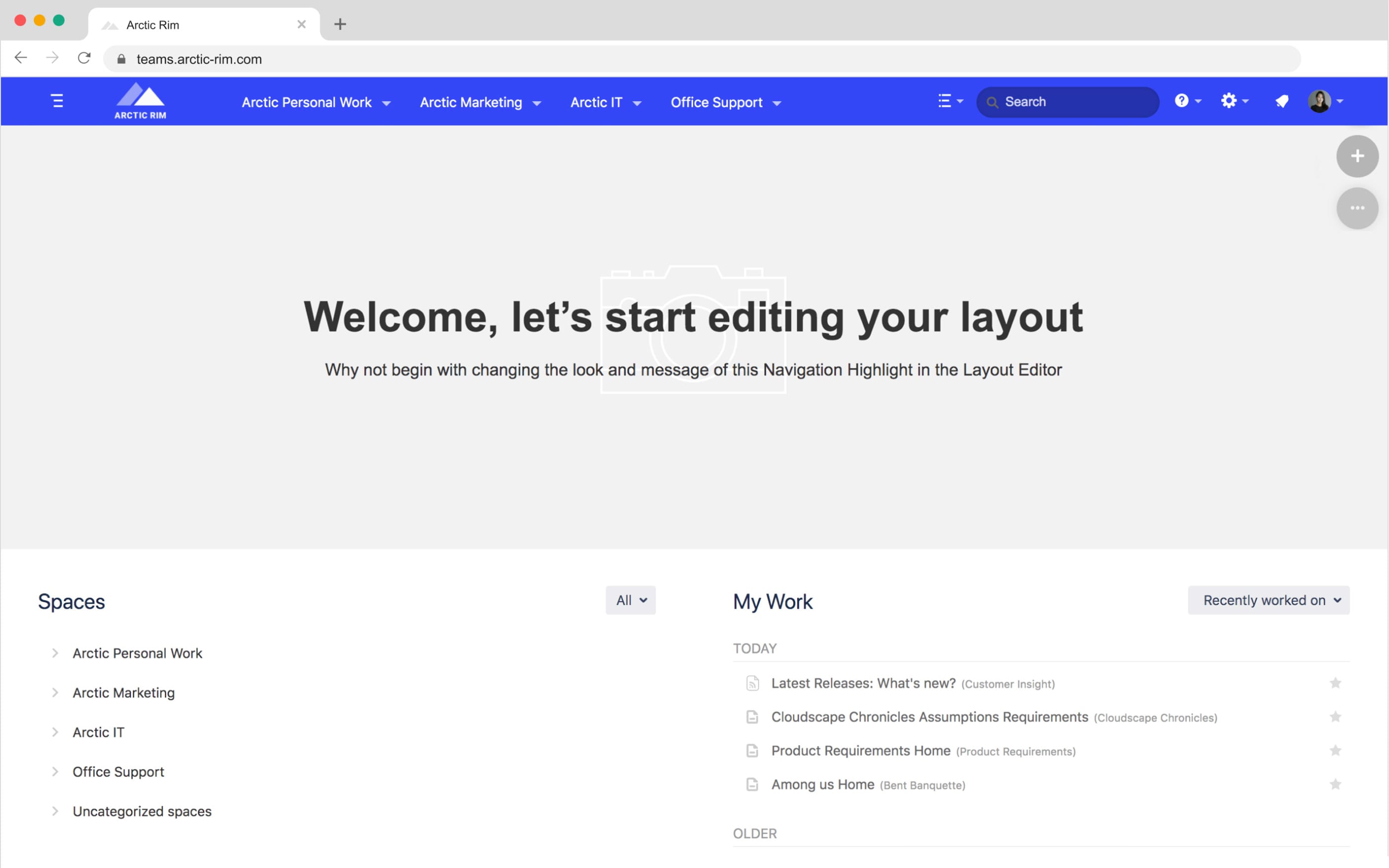
Use the built-in Themes to change the style and colors of your site. Themes can be applied individually to spaces, categories and sites, or you can keep the same global theme across your site like Arctic Rim.
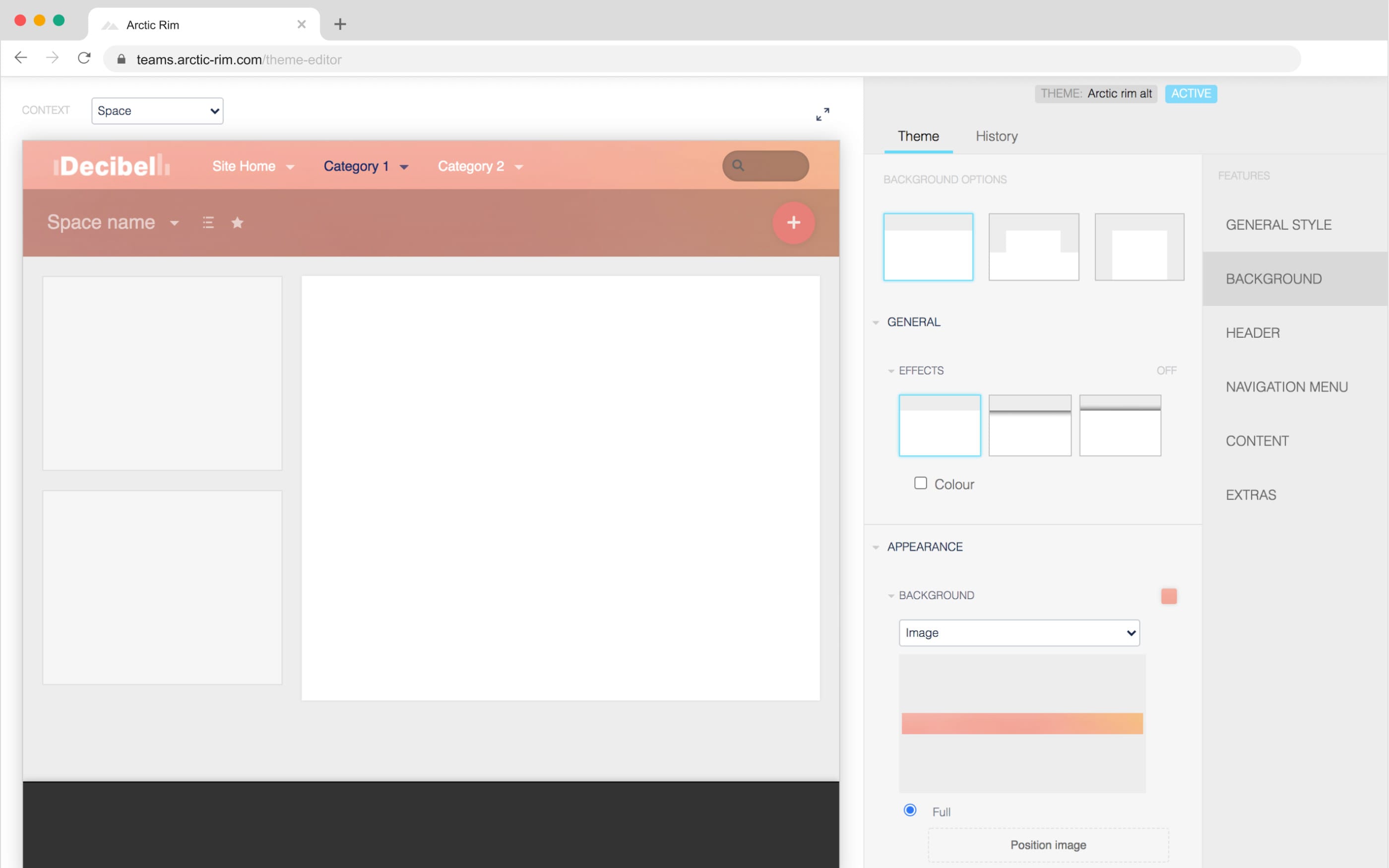
Arctic Rim chose to visually tie the layout of the site home page in with the global theme. Using the Page Builder, they added a hero image using the Site Navigation Module.
Tip: Match the hero image to your theme using the navigation Site navigation module in the Page Builder.
Recap:
- Use themes to apply your corporate identity to your Confluence site.
Step 6: Design your site, category and space homepages
Use the Page Builder to design site, category and space homepages, displaying the most important or highest-traffic content prominently on the page. Access step-by-step instructions to design kickass homepages here.
Tip: Use navigation modules for content you want users to have immediate access to. These are prominent, one-click links with an accompanying icon or photo and a short description.
Here’s how Arctic Rim built their Confluence site home layout:

Here’s how Arctic Rim built their product category home layout:
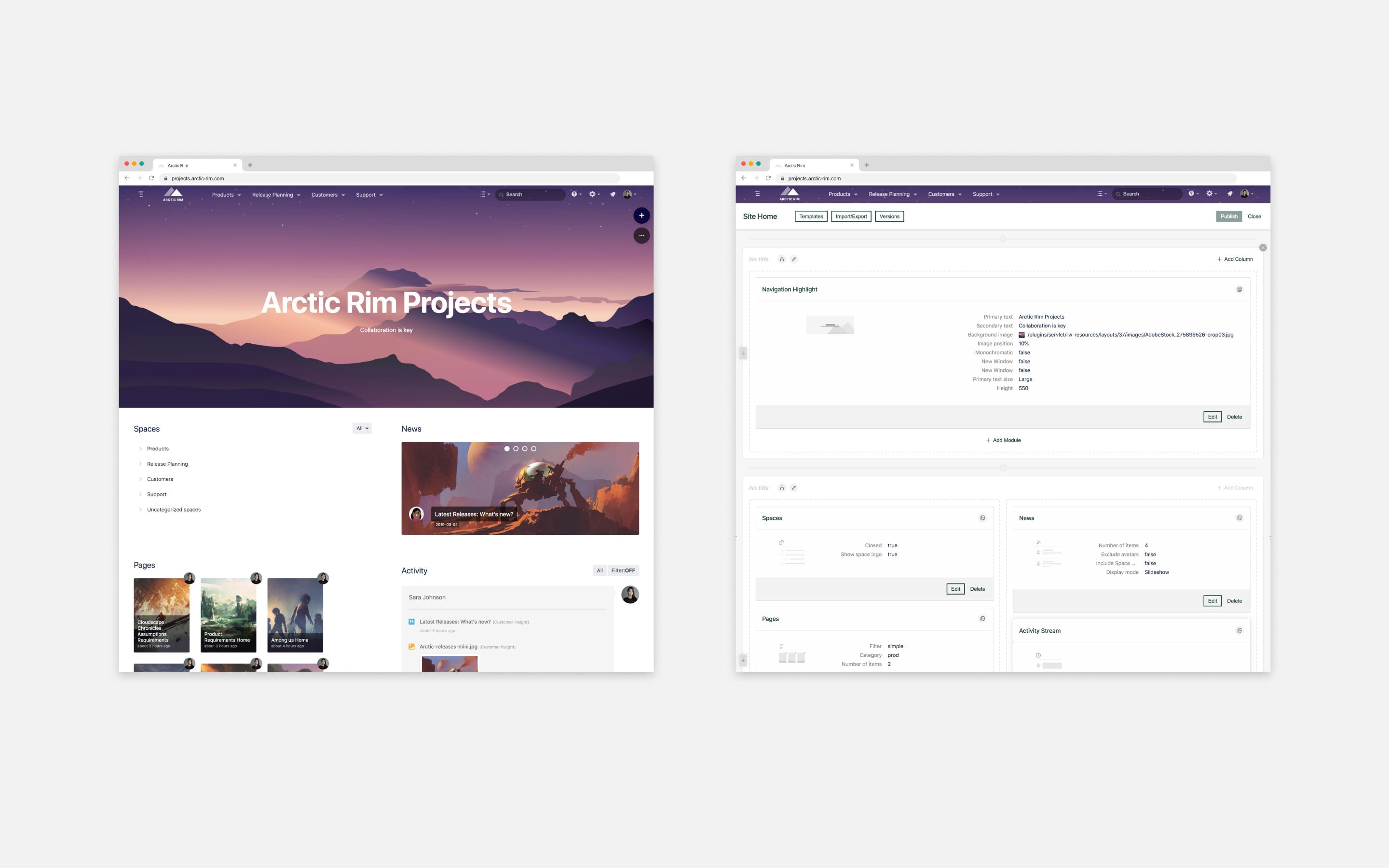
Recap:
- Work with the Page Builder to display the content users want to find first on site homes, category homes and space homes.
- Navigation modules are a good choice if you’re after a slick and engaging UI.
Step 7: Personalize the Confluence experience for users
There are three easy ways to personalize Confluence: view permissions, start sites and text variables.
- View permissions let you to define who can see what content sections, categories, and sites. You can grant permissions to groups or individuals. Arctic Rim created a content section on their team site home with a navigation link to each team work space. They applied view permissions to each navigation link (you can do this in the layout editor) so that teams only see the link to their own home. For example, the IT team sees a “Go to IT Team Home” link, and the marketing team sees a “Go to Marketing Home” link.
- Start sites allow you to set home pages according to users or user groups. So when members of Arctic Rim’s IT team log in, for example, they could be automatically directed to their IT team space homepage.
- Text variables ($username or $categoryname) are a super simple way to personalize the user experience on your site. Arctic Rim used “Welcome $username” as their team home personalized headline:
Recap:
- Use view permissions to define who can see what content on a site, category and layout content sections.
- Set start sites if you want users to log in and begin at a specific site.
- Use text variables to automate personalized text.
Try Refined for free for 30 days.
Some features mentioned in this post are available only on Refined for Confluence Sever and Data Center. Compare Refined Sites for Confluence and Server/Data Center here.
Read more about



Try Refined free for 30 days


























